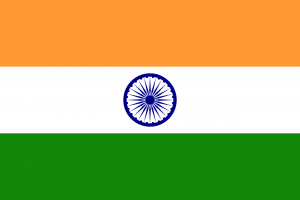Language/Hindi/Grammar/Plurals
Hi Hindi learners! 😊
In this lesson, we will learn about plurals in Hindi. Plurals are simple in Hindi, unlike other languages such as English where it can be quite complex. Let's start by understanding the basics.
Take a moment to explore these relevant pages as you conclude this lesson: Imperative Mood, Conditional Mood, Questions & Verbs and Conjugation.
Singular and Plural[edit | edit source]
In Hindi, singular nouns end with -आ, -ई, -ू, or a consonant sound. To form the plural, the ending changes to -एं.
For example:
| Hindi | Pronunciation | English |
|---|---|---|
| किताब (kitāb) | kɪ'taːb | Book |
| किताबें (kitābeṅ) | kɪ'taːbẽ | Books |
Here, the singular form of "book" is किताब (kitāb) and the plural form is किताबें (kitābeṅ).
Another example:
| Hindi | Pronunciation | English |
|---|---|---|
| मालिक (mālik) | maː'lɪk | Owner |
| मालिकें (mālikeṅ) | maː'lɪkẽ | Owners |
As you can see, the plural form is created by adding -एं (eṅ) to the end of the singular noun.
Plural ending variations[edit | edit source]
There are a few variations in forming the plural in Hindi.
- Nouns ending with अ (a) or आ (ā) add -एं (eṅ) to form the plural. For example:
| Hindi | Pronunciation | English |
|---|---|---|
| आदमी (ādmī) | aːd'miː | Man |
| आदमियां (ādmiyāṃ) | aːd'mɪjɑ̃ː | Men |
In the above example, आदमी (ādmī) means "man" in singular form. To make it plural, we add -एं (eṅ) and get आदमियां (ādmiyāṃ) which means "men."
- Nouns ending with ई (ī) or ऊ (ū) drop the vowel and add -याँ (yā̃) to form the plural. For example:
| Hindi | Pronunciation | English |
|---|---|---|
| देव (dev) | de'v | God |
| देवताएँ (devtāyā̃) | de'v'taː.jɑ̃ː | Gods |
In the above example, देव (dev) means "god" in singular form. To make it plural, we drop the vowel and add -याँ (yā̃) to get देवताएँ (devtāyā̃) which means "gods."
- Nouns ending with a consonant have no predictable plural and must be memorized. For example:
| Hindi | Pronunciation | English |
|---|---|---|
| घोड़ा (ghoṛā) | ɡʱoː.ɽaː | Horse |
| घोड़ों (ghoṛoṃ) | ɡʱoːɽõː | Horses |
In the above example, घोड़ा (ghoṛā) means "horse" in singular form. To make it plural, we change the ending to ओं (oṃ) and get घोड़ों (ghoṛoṃ) which means "horses."
Irregular plurals[edit | edit source]
In Hindi, some plurals are irregular and must be memorized. Here are some examples:
| Hindi | Pronunciation | English |
|---|---|---|
| आदमी (ādmī) | aːd'miː | Man |
| आदमियां (ādmiyā̃) | aːd'mɪjɑ̃ː | Men |
| मौसम (mausam) | moʊ'səm | Season |
| मौसमें (mausemeṃ) | moʊ'səmẽː | Seasons |
As you can see, the plural forms of आदमी (ādmī) and मौसम (mausam) are irregular and must be memorized.
Dialogue[edit | edit source]
Let's see plurals in context through a dialogue:
- महेश (Mahesh): कौनसी भाषा सीख रहे हो तुम? (Kaunsī bhāṣā sīkh rahe ho tum?) - "Which language are you learning?"
- कृष्णा (Krishna): मैं Hindi सीख रहा हूँ। (Main Hindi sīkh rahā hū̃.) - "I am learning Hindi."
- महेश (Mahesh): अच्छा, तो बताओ, 'गाय' का बहुवचन क्या होगा? (Acchā, to batāo, 'gāy' kā bahuvacan kyā hogā?) - "Okay, then tell me, what is the plural of 'cow'?"
- कृष्णा (Krishna): 'गायें' होगा। ('Gāyẽ' hogā.) - "It's 'gāyẽ'."
- महेश (Mahesh): सही जवाब! (Sahī javāb!) - "Correct answer!"
Cultural note[edit | edit source]
Hindi is spoken as a first language by around 322 million people worldwide, and as a second language by over 270 million people. Hindi is an official language of India and Fiji.
Practice[edit | edit source]
To practice plurals in Hindi, you can use the Polyglot Club website. Find native speakers and ask them any questions you may have!
You can also check out the Grammar section on the Hindi language page to learn more about Hindi grammar.
Sources[edit | edit source]
- How to make Plural from Singular noun in Hindi | Hindi Language Blog
- Hindi 1/Plurals and Postpositions - Wikiversity
Other Lessons[edit | edit source]
- Imperative Mood
- Gender
- How to Use Have
- Questions
- Nouns
- How to Use Have
- Feminine
- Future Tense
- How to Use Be


